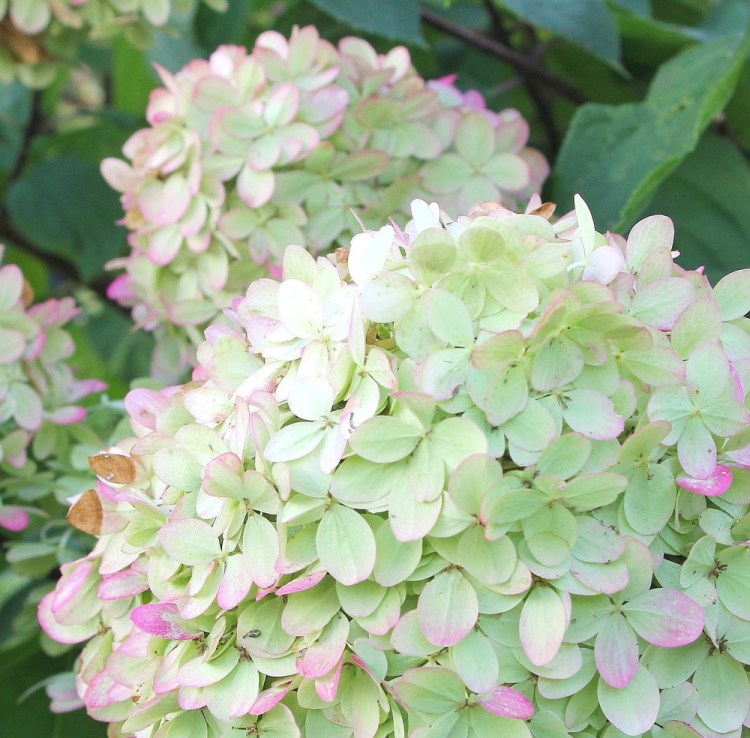Looking out the window at our backyard, I am disappointed. One clump of black-eyed Susan stands out, and I can see a bit of cream-color on some hosta leaves. Otherwise it is all green – different shades of green, yes, but green all the same.
Most gardeners do their garden planning in the spring, but to me it makes more sense to do it in the fall – especially for ornamental gardens that feature shrubs and perennials. (Plan your vegetable garden in late winter when you are going through the seed catalogs, but make notes now on this year’s production.)
In my home, the backyard garden is important. It is what I see from my office desk (also known as our second-floor guest room), what my wife Nancy and I both see from the kitchen sink, and it is where we go when we sit on our patio.
It also is a tough environment for growing pretty plants – mostly shade because of the Norway maples on our neighbor’s property. And the Norway maple roots extend into our perennial border, taking nutrients and making the area tough digging.
Earlier in the season, the garden shines. We have magnolias, azaleas, rhododendrons, daylilies, viburnums, a wonderful woodland peony, narcissus, blood root and white arabis growing along the front edge. But by fall, all these beautiful bloomers have gone by.

Yellow echinacea
We are doing our fall shopping with the goal of providing flowers for late summer and early fall in that section of the garden. We already have purchased some yellow and some white echinaceas, a Limelight hydrangea and a yakushimanum rhododendron (known for the fuzzy underside of its leaves) named “Ken Janek,” although that last is a spring bloomer and probably won’t be planted in the backyard; a spot along the driveway also needs help. I’m looking for clethra that might improve the backyard garden too.
But enough about our garden. Some people think I write about it too much already. This column is about your garden, specifically why you should assess and change it between now and when the ground freezes.
Shopping in the spring, you tend to pick spring bloomers. It’s a natural impulse – they are in bloom then so they look best in the nursery. If you went plant shopping once a month, always buying plants that are in bloom, your garden would probably have color all season long, but I suspect many of you haven’t been back to the nursery since before Memorial Day.
Now that it is September and the temperatures are cooler, take a leisurely walk around your grounds, noting each plant and, if possible, how it did during this growing season. Did it bloom, and if so, when and how profusely? Did the blooms go well with nearby plants? Does the plant look healthy? Were there times when, as in our backyard in the fall, almost nothing is in blossom?
Ideally, you would have made notes as the season progressed, and I know some people who do that. But our summers tend to get busy with company and day trips in addition to picking fruits, vegetables and flowers as well as tending the gardens. We never get around to taking notes.
On the other hand, your memory of the garden now is a lot better than it will be next spring, so figure it out now.
And then shop. Although a lot of the plants at your local nursery will not be in bloom, the tags will tell you when they would bloom and you can match that up with your garden’s blah periods. Also, the staff at locally owned garden centers know their stuff, and in my experience they are always willing to help.
One question I get from new gardeners is whether they can plant perennials, trees and shrubs this late in the season. The answer is yes.
While the air temperatures are cooler, which is more comfortable for both the plants and the gardeners than is the heat of summer, the ground is much warmer than it is in the spring – which promotes root growth.
As always, you have to water the plants profusely when you plant them – filling the hole with water and letting it drain before you put in the plant, and then watering again after the plant goes in. And water every day it doesn’t rain, stopping only when the ground freezes. Don’t fertilize in the fall, because that promotes tender new growth, which can be damaged by winter weather.
The other reason to buy plants in the fall is because that is when the garden centers lower their prices. We needed the Limelight hydrangea for our backyard, but because of a fall sale the second plant, our “Ken Janek” rhododendron, was half price (buy one plant, get the second at half price).
The sales won’t be the same at every nursery, but they all have some kind of sale on now. Special fall plants like chrysanthemums will be full price, but the nursery stock will be bargains. If the plants aren’t sold now, the staff will have to take care of them all winter – and that takes both labor and money – so the nurseries are trying to unload plants. Review your garden, take notes and go shopping. That’s what I’m going to do.
Tom Atwell is a freelance writer living and gardening in Cape Elizabeth. He can be contacted at 767-2297 or at: tomatwell@me.com.
Send questions/comments to the editors.


